Types of Hydroponics Systems
The Guide to Hydroponic Systems: Which is Right for You?
Hydroponics, the method of growing plants without soil, is rapidly gaining popularity due to its efficient use of water and nutrients, space-saving design, and potential for faster plant growth. Whether you’re new to hydroponics or looking to expand your knowledge, understanding the different types of hydroponic systems is essential. In this guide, we’ll delve deep into six primary hydroponic systems:
- Wick System
- Deep Water Culture (DWC)
- Nutrient Film Technique (NFT)
- Aeroponics
- Ebb and Flow (Flood and Drain)
- Drip System

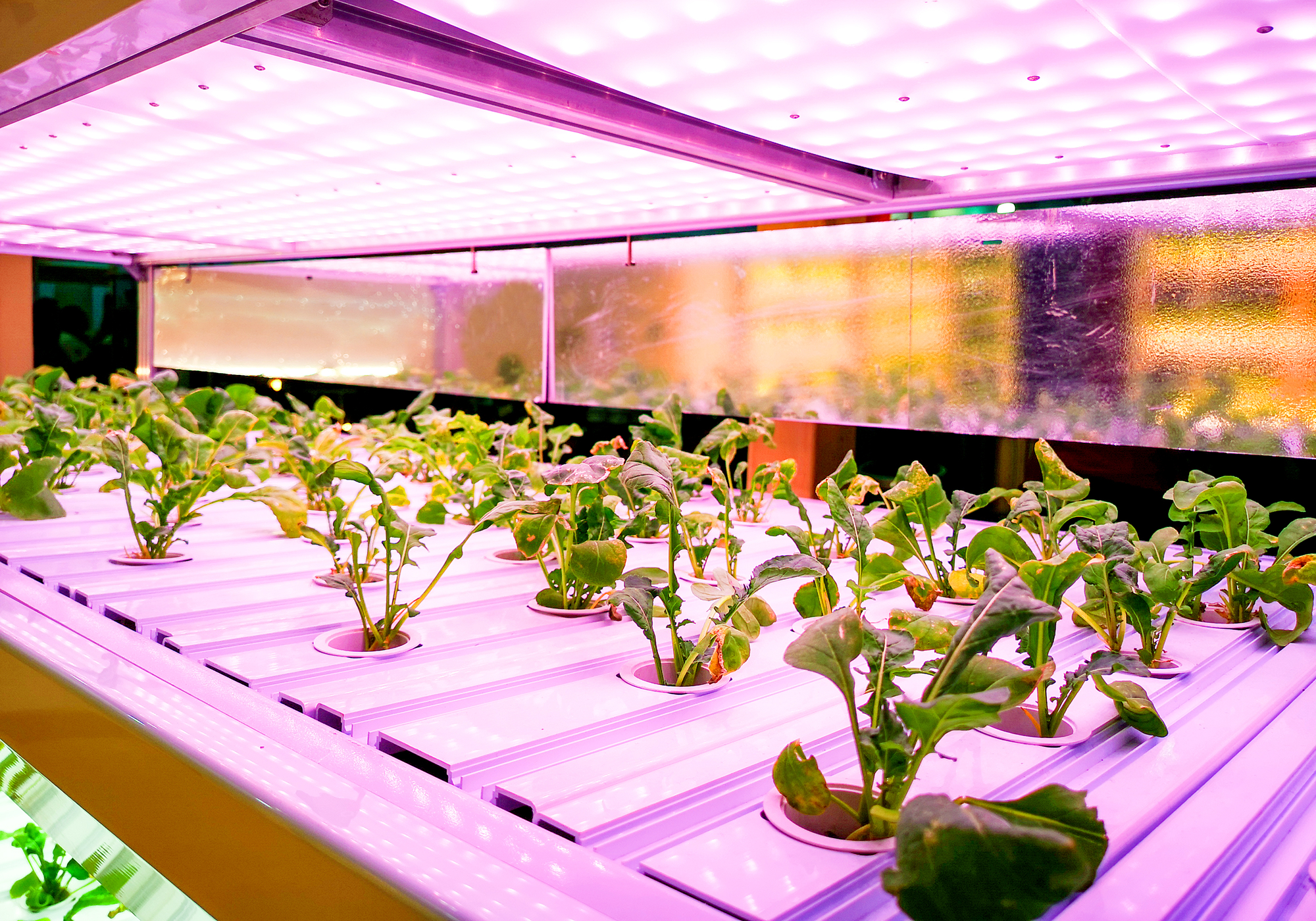
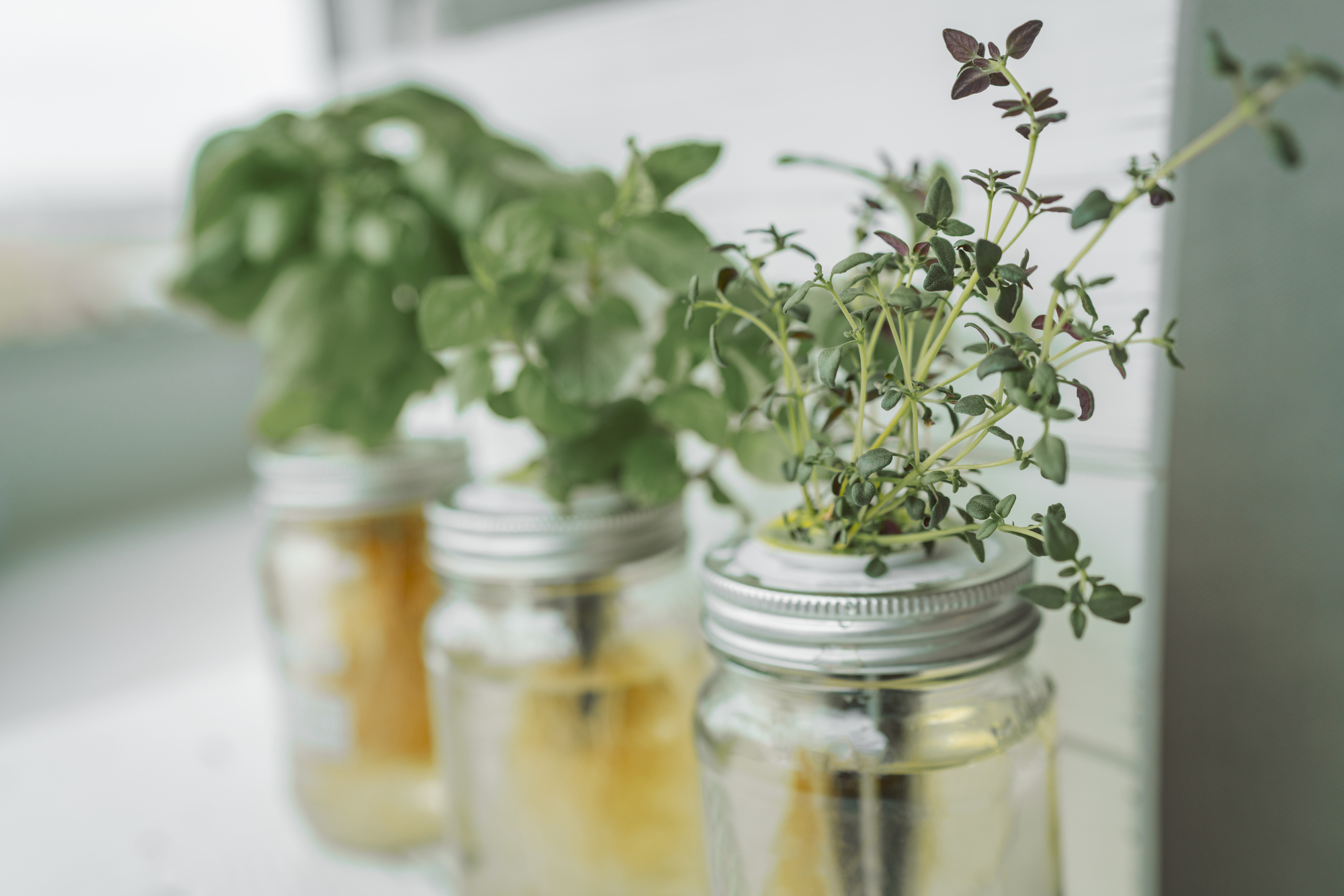
Wick System
How the Wick System Works
At its core, the Wick System uses a series of wicks (often made from materials like rope or felt) to transport nutrient-rich water from a reservoir to the plants’ growth medium. The roots of the plants do not directly touch the water but instead absorb the nutrients as the solution moves up the wicks through capillary action.
Components:
-
Reservoir: This holds the nutrient solution. It’s positioned below the growing tray.
-
Growing Tray: This is where your plants reside. It contains the growth medium and plants and is positioned above the reservoir.
-
Wicks: These act as a bridge between the reservoir and the growth medium, transporting the nutrient solution.
-
Growth Medium: Often made of coconut coir, vermiculite, or perlite, this soilless medium anchors the plants and helps regulate moisture and nutrient availability.
Benefits of the Wick System
- Simplicity: With minimal moving parts, the Wick System is straightforward to set up and maintain.
- No Need for Electricity: This system doesn’t require pumps, making it an energy-efficient choice.
- Cost-effective: Given its basic components, starting with the Wick System is often cheaper than other hydroponic setups.
- Ideal for Small Plants: Great for plants like herbs and smaller ornamentals.
Limitations of the Wick System
- Nutrient Distribution: Over time, the solution’s upper layers can become less nutrient-rich compared to the bottom, causing an imbalance.
- Not Suitable for Large Plants: Bigger, more water-hungry plants might not get enough nutrients from the wicking action alone.
- Risk of Over or Under-Watering: The system’s success relies on the wick’s material and its efficiency in transporting the solution.
Setting up a Wick System
- Choose a Reservoir and Tray: Ensure the tray (with growth medium) can sit comfortably above the reservoir.
- Install Wicks: Attach one end to the bottom of the growing tray, ensuring the other end reaches well into the nutrient solution in the reservoir.
- Add Growth Medium and Plants: Fill the growing tray with the chosen medium and plant your seedlings.
- Prepare and Add the Nutrient Solution: Mix water with hydroponic nutrients (according to the manufacturer’s recommendation) and fill the reservoir.
Conclusion
The Wick System serves as a testament to the adaptability and variety within hydroponic gardening. Perfect for beginners, it provides a foundation to understand plant growth dynamics in a soilless environment. As with any system, understanding its mechanics, strengths, and limitations ensures a thriving hydroponic garden.
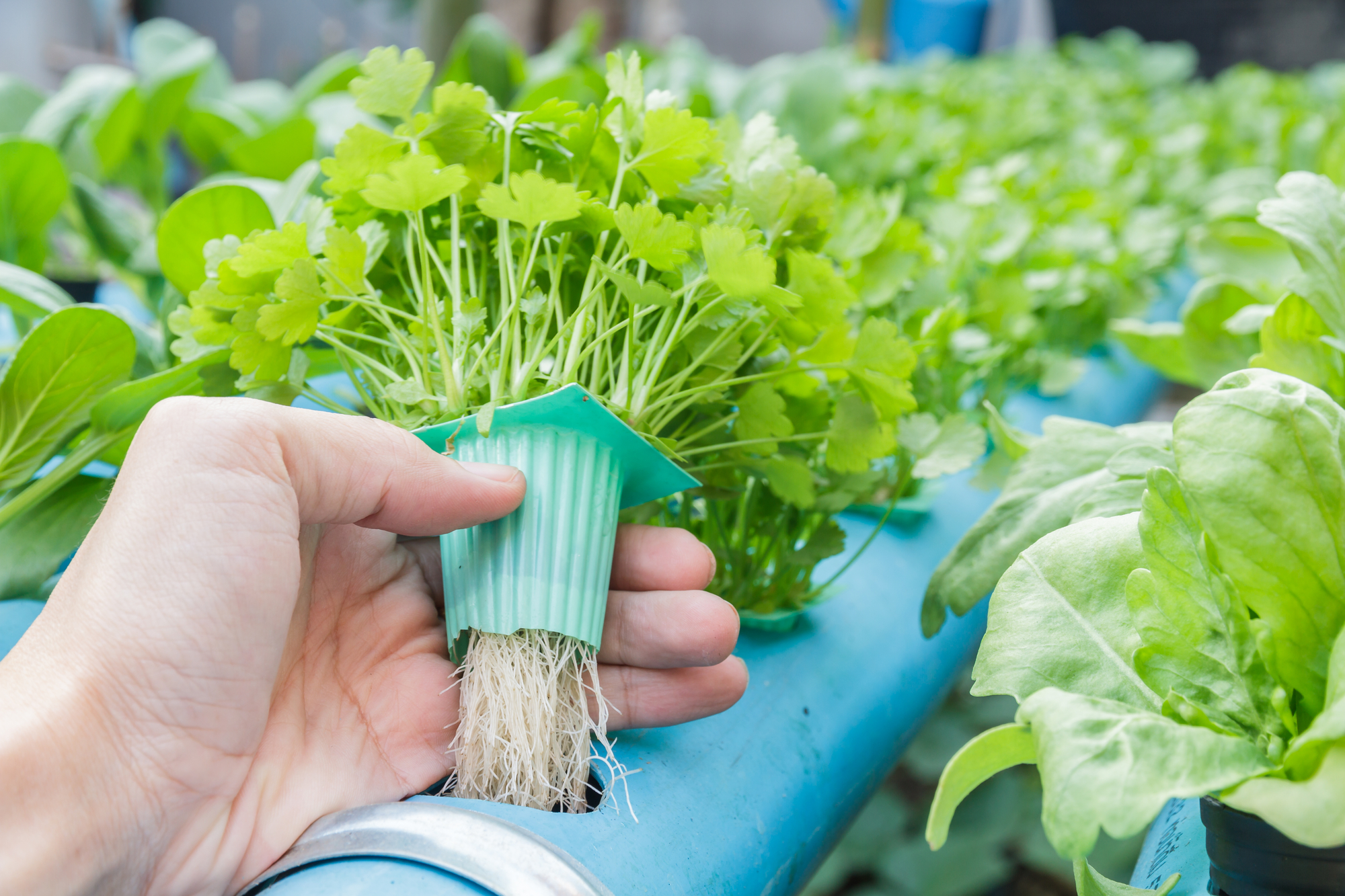
Deep Water Culture System (DWC)
A Deep Dive into Hydroponic Excellence
One of the most recognized and adopted hydroponic systems, Deep Water Culture (DWC) offers growers a streamlined and efficient means of fostering rapid plant growth. With its roots literally immersed in nutrient-rich water, plants in a DWC setup enjoy constant access to both nutrients and oxygen. If you’re considering adopting this method, our guide will walk you through its fundamentals, benefits, potential challenges, and best practices.
Understanding Deep Water Culture (DWC)
In DWC, plants are typically suspended in a net pot above a reservoir filled with nutrient-rich water. The roots dangle into this solution, but it’s not just a stagnant pool of nutrients. Air stones connected to air pumps continuously oxygenate the water, ensuring that roots get ample oxygen, preventing potential issues like root rot.
Components:
-
- Reservoir: Holds the nutrient solution and the bulk of the system.
- Net Pots: These hold the plants, allowing roots to grow down and into the nutrient solution.
- Air Stones and Air Pump: Oxygenate the nutrient solution, ensuring roots breathe and preventing stagnation.
- Nutrient Solution: A mix of water and hydroponic nutrients tailored to the plant’s needs.
Benefits of DWC
- Rapid Growth: Constant access to nutrients and oxygen often results in faster vegetative growth and shorter grow cycles.
- Simplicity: Once set up, DWC is relatively straightforward to maintain.
- Scalability: Whether you’re growing one plant or hundreds, DWC can be scaled up or down to fit your needs.
Limitations of Deep Water Culture
- Power Dependency: DWC relies on air pumps running continuously. Power outages can lead to oxygen deprivation.
- Water Temperature Concerns: The nutrient solution’s temperature must be monitored. If it becomes too warm, it could foster root diseases.
- Monitoring and Adjustments: Regular checks on pH and nutrient concentration are crucial to ensure plants remain healthy.
Setting Up a DWC System
- Choose a Suitable Reservoir: This could range from a simple bucket for a single plant to large containers for multiple plants.
- Install Air Stones and Pump: Position air stones at the reservoir’s bottom and connect them to the air pump.
- Prepare Net Pots: Fill net pots with hydroponic-friendly growth medium like hydroton or perlite and plant your seedlings.
- Mix and Add Nutrient Solution: Combine water with hydroponic nutrients as per the manufacturer’s guidelines and fill your reservoir.
- Monitor and Adjust: Regularly check the water level, pH, and nutrient concentration. Adjust as necessary for optimal plant health.
Conclusion
Deep Water Culture (DWC) remains a favorite in the hydroponic community, and for a good reason. Its simplicity, combined with the potential for explosive growth, makes it an appealing choice for both novices and seasoned hydroponic enthusiasts. Armed with knowledge and vigilance, you can harness DWC’s full potential, enjoying bountiful harvests and thriving plants.

Nutrient Film Technique (NFT)
The Streamlined Approach to Hydroponic Growth
For those passionate about hydroponics and always on the lookout for efficient and space-saving solutions, the Nutrient Film Technique (NFT) offers an intriguing and effective method. With its unique design, where a thin film of nutrient-rich water flows over the roots, NFT has carved its niche in the hydroponic world. This guide will delve into the intricacies of NFT, exploring its advantages, challenges, and setting up guidelines.
Decoding the Nutrient Film Technique (NFT)
The NFT system is characterized by its simplicity and dynamic flow. Plants are placed in holes along a slightly tilted tray or channel. This tilt ensures that nutrient-rich water introduced at the higher end flows down, bathing the roots in its course, before being collected and recirculated from the lower end.
Key Components:
-
Growth Channels or Trays: Usually made of PVC or other waterproof materials, they host the plants and guide the nutrient solution flow.
-
Reservoir: Holds the nutrient solution that is pumped to the top of the channels.
-
Submersible Pump: Ensures the continuous flow of the nutrient solution through the system.
-
Return Channels: Collect the unused nutrient solution and direct it back to the reservoir for recirculation.
Benefits of NFT
- Efficient Water Use: Since water is constantly recirculated, NFT is exceptionally water-efficient.
- Maximized Oxygen Access: With roots exposed to air most of the time, plants enjoy ample oxygen, promoting healthier growth.
- Scalability: From small indoor setups to expansive commercial systems, NFT is easily scalable.
Limitations of NFT
- Reliance on Constant Power: A power interruption can halt nutrient flow, potentially damaging plants within hours.
- Root Competition: As plants grow, larger roots can overshadow smaller ones, depriving them of essential nutrients.
- Disease Spread: If one plant gets infected, the recirculating nutrient solution can rapidly spread the disease throughout the system.
Setting Up an NFT System
- Establish Growth Channels: Set up your channels ensuring they have a slight gradient, typically a 1-3% slope.
- Position Plants: Secure plants in the channels using net pots or suitable growth medium, ensuring roots dangle freely.
- Prepare and Add Nutrient Solution: Mix water with the recommended hydroponic nutrients and fill your reservoir.
- Initiate Flow: Using the submersible pump, initiate the nutrient flow, ensuring it’s consistent and uninterrupted.
Conclusion
The Nutrient Film Technique (NFT) is a testament to the innovative strides hydroponics has made over the years. While it might pose some challenges, the rewards in terms of growth speed, efficiency, and space-saving capabilities make it a favorite among many hydroponic growers. With proper care, attention, and regular maintenance, NFT can be the hydroponic solution you’ve been seeking.
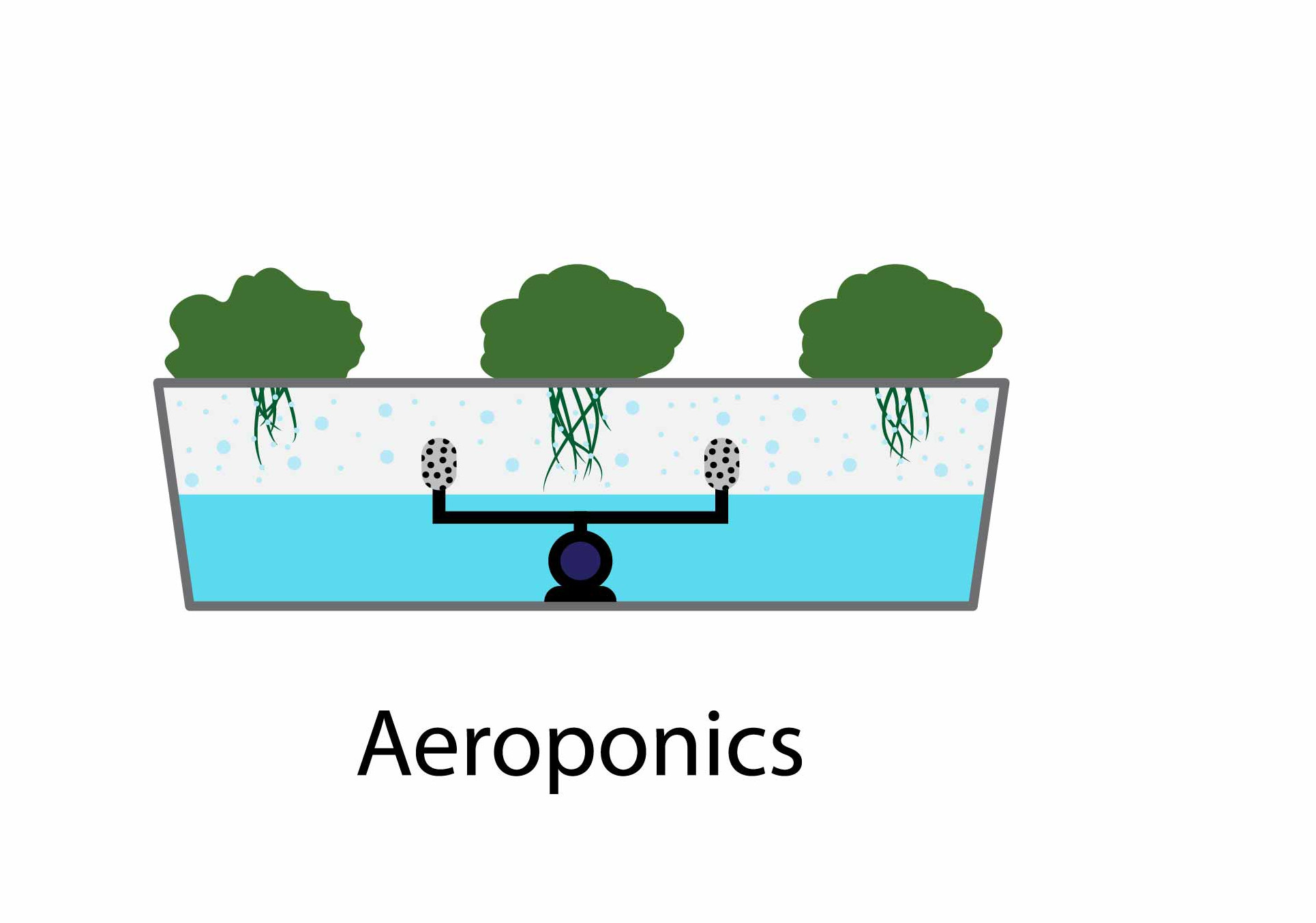
Aeroponics
Elevating Plant Growth to New Heights
Aeroponics, a subset of hydroponics, is often regarded as the pinnacle of soilless agriculture due to its efficiency and technological prowess. Instead of immersing roots in water, as with traditional hydroponics, aeroponics suspends plants in air and intermittently mists the roots with a nutrient-rich solution. This guide takes a closer look at aeroponics, highlighting its merits, challenges, and steps to establish an aeroponic system.
Unraveling Aeroponics
At its core, aeroponics maximizes air exposure by allowing plant roots to hang in a closed or semi-closed environment. Nutrient-laden mist nourishes these suspended roots at regular intervals, ensuring they receive both hydration and sustenance.
Essential Components:
-
Growth Chamber: This enclosed space holds the plants and protects the roots from light and contaminants.
-
Misting Nozzles: These deliver the nutrient solution in fine sprays, ensuring maximum absorption by the roots.
-
Reservoir: This stores the nutrient solution, which is pumped to the misting nozzles.
-
Submersible Pump and Timer: These ensure the periodic misting of the roots, optimizing nutrient absorption and preventing oversaturation.
Benefits of Aeroponics
- Maximized Oxygen Uptake: With roots exposed to air, plants can absorb oxygen more efficiently, promoting faster growth.
- Efficient Nutrient Use: The misting technique ensures that plants receive nutrients directly, reducing wastage.
- Reduced Water Usage: Aeroponics typically uses less water than other hydroponic methods.
- Compactness and Scalability: Aeroponic systems can be adapted for small indoor setups or large-scale commercial endeavors.
Limitations of Aeroponics
- System Complexity: Aeroponics generally requires a more sophisticated setup, with precision nozzles and timed systems.
- Reliance on Continuous Operation: Any prolonged system failure (like pump failure) can rapidly harm the plants.
- Maintenance Intensity: The system’s misting nozzles can get clogged, and the environment can become conducive to pathogens if not cleaned regularly.
Setting Up an Aeroponics System
- Assemble Growth Chamber: Ensure it’s sealed well to prevent light from reaching the roots.
- Install Misting Nozzles: Position them to ensure even misting of all plant roots within the chamber.
- Mix and Store the Nutrient Solution: Fill the reservoir with water and mix in hydroponic nutrients following manufacturer recommendations.
- Initiate the System: Start the submersible pump, ensuring the timer is set to mist roots at regular intervals (typically every few minutes).
Conclusion
Aeroponics, while challenging in its intricacies, promises unparalleled efficiency and productivity when managed correctly. It’s a testament to the futuristic strides of agriculture, bridging the gap between innovation and sustainability. If you’re up for the challenge and intrigued by the science of it, aeroponics might just be your next venture.
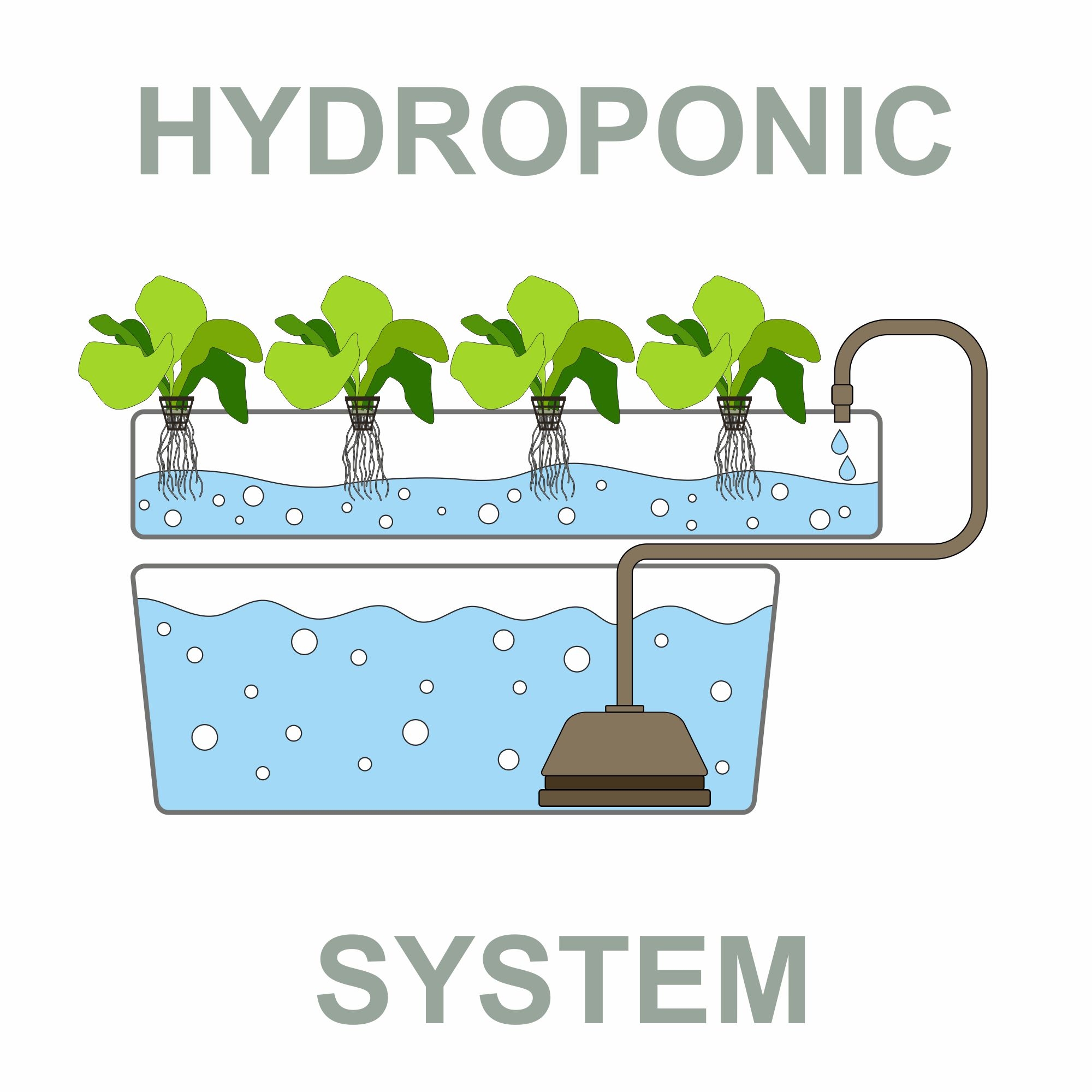
Ebb and Flow (Flood and Drain)
The Tidal Rhythms of Hydroponic Growing
Ebb and Flow, also popularly known as Flood and Drain, is a hydroponic method that resonates with the rhythmic cadence of nature—mimicking the tides of the ocean. Root systems experience regular flooding with nutrient-rich water, followed by a draining period, allowing them to breathe and absorb oxygen. This guide offers insights into the Ebb and Flow system, its benefits, potential challenges, and foundational guidelines for setup.
Understanding Ebb and Flow (Flood and Drain)
In the Ebb and Flow setup, plants are held in a growth tray or bed filled with a hydroponic-friendly medium, such as perlite, vermiculite, or gravel. Periodically, a nutrient solution is pumped into the growth tray, submerging the roots. After a set time, the solution is drained back into the reservoir, leaving the growth medium moist but not oversaturated.
Primary Components:
-
Growth Tray/Bed: This holds the plants and the growth medium where roots reside.
-
Reservoir: A container storing the nutrient solution.
-
Submersible Pump: Helps in flooding the growth tray at set intervals.
-
Overflow Tube or Drain: Ensures that the tray doesn’t over-flood and helps drain the solution back to the reservoir.
Benefits of Ebb and Flow
- Versatility: Suitable for various plant types, sizes, and growth stages.
- Efficient Water and Nutrient Use: Recirculation ensures minimal waste.
- Oxygenation: The draining phase ensures roots receive ample oxygen, promoting robust growth.
- Flexibility in Medium Choice: Growers can select from a range of growth mediums based on plant needs and preferences.
Limitations of Ebb and Flow
- Power Dependency: The system relies on the pump for flooding and draining. A power failure can disrupt this cycle.
- Medium Saturation: It’s crucial to achieve the right balance to prevent root rot from oversaturation or plant stress from dehydration.
- Regular Maintenance: Ensuring the system remains clog-free, especially the pump and drain, is essential for optimal operation.
Setting Up an Ebb and Flow System
- Prepare the Growth Tray: Fill it with your chosen growth medium and position the plants.
- Position the Reservoir: It should be placed below the growth tray, allowing gravity to assist in the draining phase.
- Install the Pump: Ensure the pump can move the nutrient solution from the reservoir to the growth tray.
- Set Up Overflow and Draining: Incorporate an overflow mechanism to prevent over-flooding and facilitate smooth draining.
- Initiate the Cycle: Start the submersible pump and establish a timer to control the flooding and draining intervals.
Conclusion
The Ebb and Flow (Flood and Drain) system is an embodiment of rhythm and balance in hydroponics. It merges the best of water-based nutrient delivery with periods of oxygen-rich respiration. While it requires attentive maintenance, its rewards in terms of growth rates and plant vigor make it a favored choice among hydroponic aficionados.
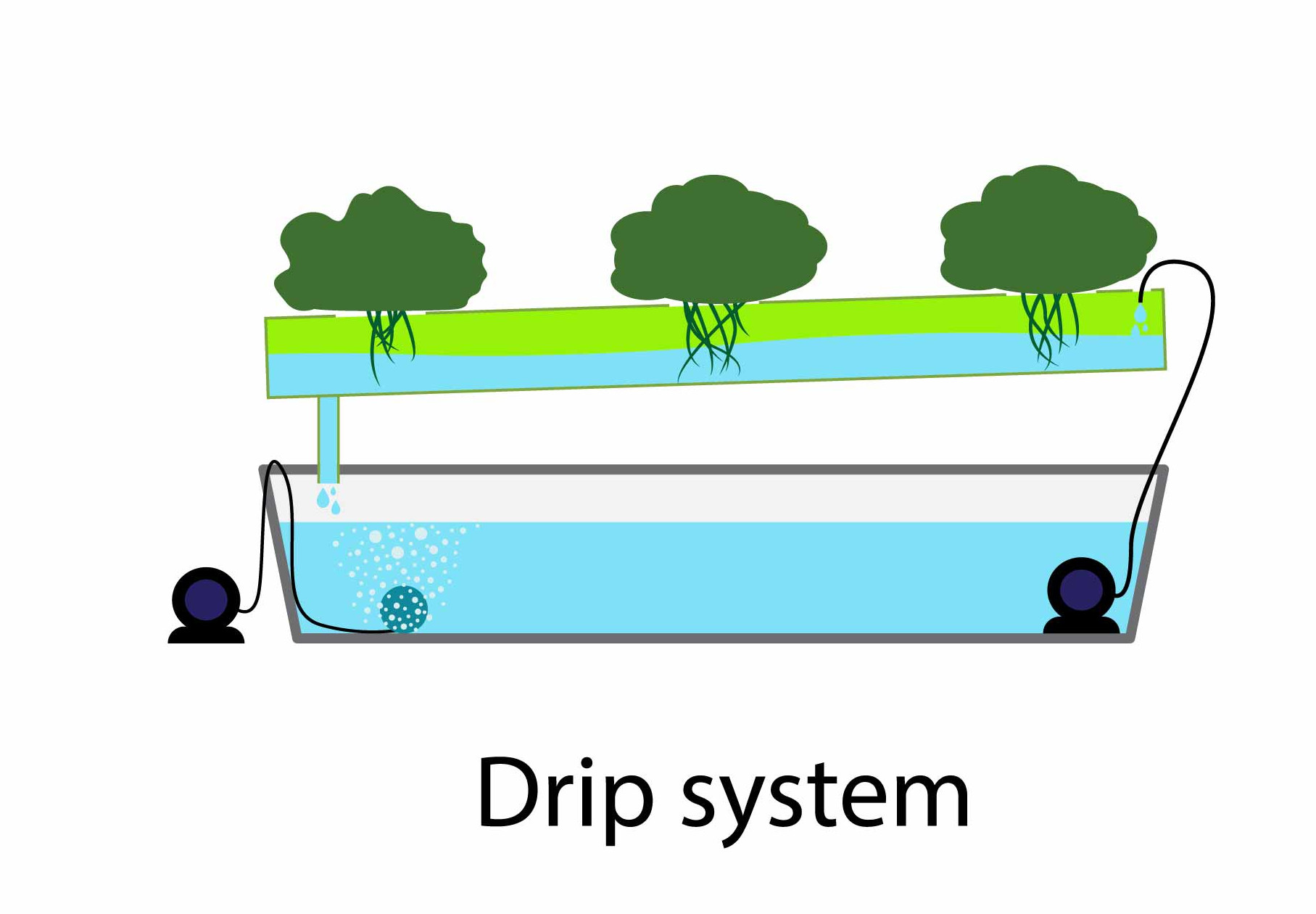
Drip System
The Precision Technique for Nutrient Delivery
In the vast landscape of hydroponic methods, the Drip System stands out for its meticulous precision and efficiency. Taking cues from traditional drip irrigation, this system ensures plants receive their nutrient solution drop by drop, offering a tailored approach to each plant’s unique needs. This article delves into the nuances of the Drip System, spotlighting its advantages, potential hurdles, and the nuances of setting it up.
Understanding Drip System
At its core, the Drip System involves a network of tubes, valves, and drip emitters that deliver nutrient-rich water directly to the root zone of each plant. Depending on the configuration, the excess solution can either be drained away (non-recovery) or recirculated (recovery).
Key Components:
-
Growth Medium: Unlike other hydroponic systems that might have suspended roots, the Drip System usually employs mediums like coco coir, perlite, or rock wool to anchor plants.
-
Reservoir: This container holds the nutrient solution that will be delivered to the plants.
-
Drip Emitters: Positioned near each plant, they regulate the flow of the nutrient solution.
-
Tubing and Drip Lines: These channels transport the nutrient solution from the reservoir to the plants.
Benefits of a Drip System
- Precision: By targeting the root zone, plants receive exactly what they need, minimizing waste.
- Flexibility: Suitable for various plants, from herbs to larger crops.
- Water Efficiency: Especially with recovery systems, the Drip System can be remarkably water-conservative.
- Scalability: Adaptable for both small-scale home gardens and large commercial ventures.
Limitations of a Drip System
- Clogging Risks: Drip emitters and tubing can get clogged by particulates or mineral buildup.
- Electric Dependency: Like many hydroponic setups, a power failure can disrupt the drip cycle.
- Maintenance: Regularly checking for clogs, adjusting drip rates, and ensuring even delivery requires attention.
Setting Up a Drip System
- Position Your Plants: Arrange them in the chosen growth medium, ensuring they’re securely anchored.
- Lay Out Tubing: Connect the main tubing to the reservoir pump and run smaller drip lines to each plant.
- Install Drip Emitters: Attach these to the end of each drip line, positioning them near the base of each plant.
- Fill and Test: Mix your nutrient solution in the reservoir and turn on the system, adjusting drip rates as necessary.
Conclusion
The Drip System, with its precision and adaptability, has established itself as a favorite among growers who desire control and efficiency. While it demands meticulous attention, especially in monitoring and maintenance, its rewards in terms of plant health and yield make the effort worthwhile.
Stay In Contact
Drop us a note and let us know what is on your mind regarding hydroponics.
Address
2700 Brase;ton Hwy. Suite 10-244, Dacula, Ga. 30019
Phone
(706) 247-7060
